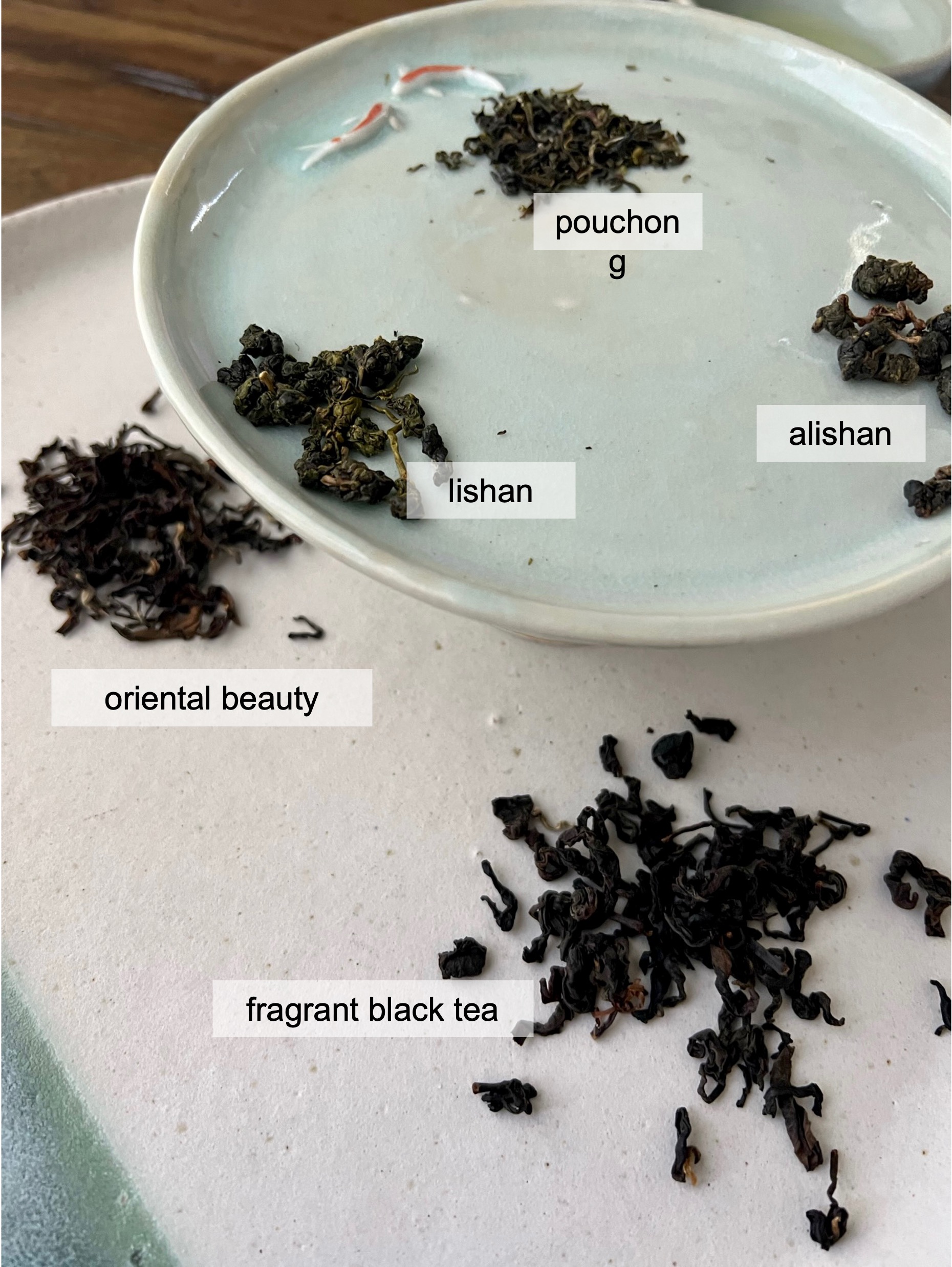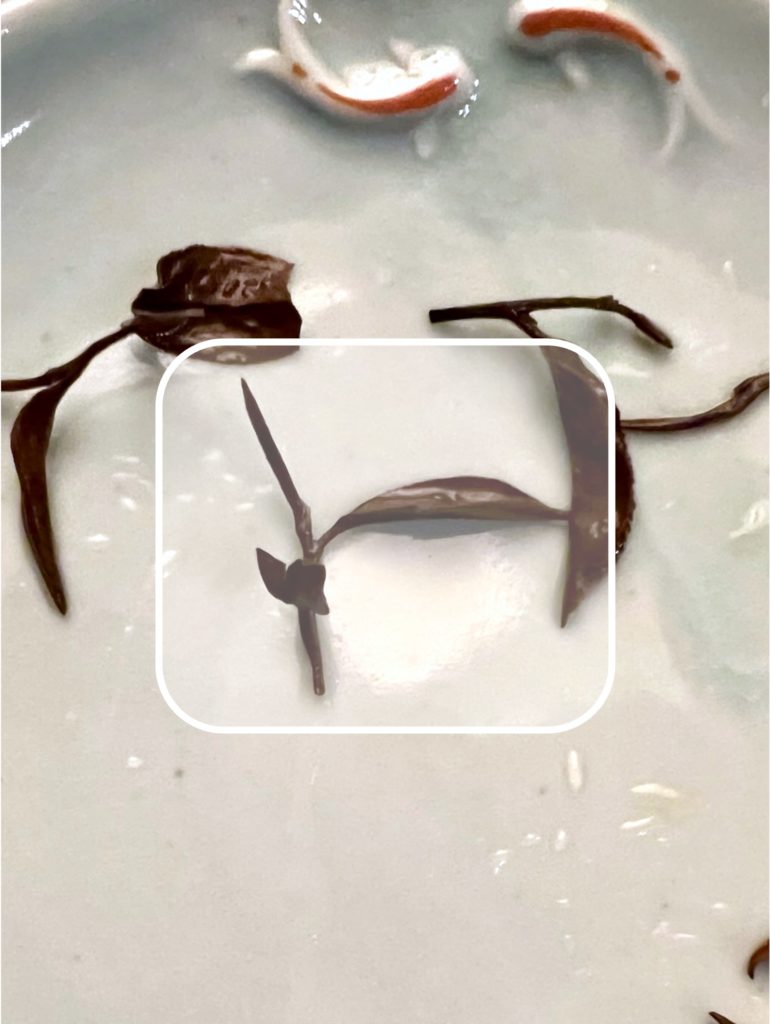Happy Lunar New Year!
I hope the Year of the Tiger will bring you great fortune, true happiness and very good health. As I write this, I am making my list of to-do’s before the lunar new year arrives: clean my house, make sweet rice cake, buy clementines and fresh red-hued flowers for my mom. Usually my parents host the family for a warming, cozy hot pot meal, but this year (like last year) we’ll be visiting on the porch.
Given how hard it is to celebrate with big in-person events these days, I had been pondering how to celebrate this new year with different and new activities. One fun thing I did was to commission a New York artist named Ray Wang to create artwork on a red envelope. The piece is lovely and you can see it here.
I also reached out to my dear friend Heidi from Chun Ceramics to see if she would taste tea with me. You see, Heidi is not only a talented ceramicist, but also quite the tea connoisseur. So to celebrate the new year as well as our shared Taiwanese heritage, she delivered a few precious oolong teas to me, and we met over Zoom to taste them together. Although I would have loved to have been with her in person, I still loved catching up with her online. Silver lining: Zoom allowed her to easily pull up Google Maps while I peppered her with questions about Taiwan’s tea regions.
Although I love drinking tea, I am not very discerning. I can only say that whenever I smell oolong tea, it reminds me of my dear dad who has always sipped oolong throughout the day. My father is more of an everyday tea drinker and doesn’t necessarily appreciate the more refined Taiwanese oolong teas that have become more popular, so that is why I was so pleased to learn more about the teas from Heidi.
Oolong tea originates from China’s Fujian province, but Taiwanese oolong production is unique because of the mountainous terrain and the fog that permeates the hillsides where Taiwanese tea is grown. Similar to wine, tea experts speak to the terrain and climate as being key to a tea’s identity. For oolong, the mountains and moist air of Taiwan creates a tea that is unmistakably distinctive to the island. Furthermore, local tea producers have refined the fermentation practices that enhance the flavor of the tea leaves, making Taiwanese oolong some of the most coveted tea in the world.
Heidi was born and raised in Taiwan, so oolong represents a very special connection to her home. She has been tasting oolong teas for most of her adult life, but her favorite oolong remains the Oriental Beauty from her home district of Hsinchu. Oriental Beauty is a very special type of oolong that has notes of flowers and honey, and comes with a fascinating origin story. Apparently this tea (which is grown at lower elevation) owes its unique fragrance to the leaf damage incurred by a specific cicada- which sounds disturbing but is elegantly explained in this clip from a Taiwanese drama called “Gold Leaf.”

For our tasting, Heidi selected these teas for us:
- Pouchong Tea – a commercial oolong packaged for convenient tea bags
- Alishan – a typical oolong from the mountainous Alishan region of Taiwan
- Lishan – a typical oolong from the island’s central region of Lishan, often even more prestigious than Alishan
- Oriental Beauty – as mentioned above, a unique oolong that is fermented longer than the Alishan or Lishan teas
- Honey Fragrant Black Tea – a deep dark tea that is more typical of a Western black tea

The bagged Pouchong tea was a great example of an everyday oolong: definitely more tannic with a sharper profile of a woody, earthy tea. I imagine this is a great packaged tea you might find in a good Taipei hotel or nice corporate office break room. I appreciated that Heidi included this as a baseline, so that I could “climb” the rest of the way through the tasting with more elevated teas.
The Alishan and Lishan oolongs were far more nuanced in flavor, with less tannin and a more buttery mouth feel. Alishan had more expressive floral notes and a pronounced sweetness that the Lishan tea only echoed.
The final two teas Heidi coached me through were the most special, her favored Oriental Beauty and a nice fragrant black tea similar to the black teas you find in Western countries.
The black tea was so delicious- reminiscent of an Assam black tea, but with a marked sweet, honey scent that makes the aroma and flavor of the warm tea irresistible. Heidi told me that similar to other Western black teas, one can add milk to this tea if preferred. I might try adding a little warm soymilk next time (I think this is the best one with no added flavoring or sugar).
The flavor of the last tea we tasted, Oriental Beauty, was indeed as unique as its “insecta” pedigree. It had the same floral profile as a typical oolong like the Alishan, but with an additional fruit-forward (almost sour) note that Heidi suspects comes from the additional fermentation time that Oriental Beauty is known for. This combination of floral and fruit flavors in oolong were so new to my palate. I felt inspired!
Heidi also taught me that inspecting the leaves after tasting was an important clue as to the quality of the tea picked. The leaves should unfurl completely intact when brewed, and you want to see one bud with two leaves as that represents the very nicest young tips of the tea plant.

So where can you find a lovely Taiwanese oolong tea for yourself? Unfortunately we were tasting from Heidi’s own collection, most of which she procures herself when she travels home to visit family. However, here are a few options for our US-based readers to try.
From Taiwan’s Jing Sheng Yu Tea Company Heidi recommends these basic teas to experiment with: an Alishan, an Oriental Beauty and a simple (yet delicious) black tea. Shipping is about $50, so it might be worth it to partner up with other friends on an order and split the shipping cost.
For a more local option, check out this local San Francisco tea shop called Song Tea. The teas can be expensive, but we recommend starting with this Shan Lin Xi Winter Sprout tea that is moderately priced. Plus, shipping appears to be free for purchases over $20.
Thanks for reading about our Taiwanese tea tasting journey. I hope next year Heidi and I will be able to taste tea again (in real life!) and make this a new lunar new year tradition for us. We both wish you the best for the coming new year, and appreciate your continued support of both FUTURE LYNN and Chun Ceramics.




